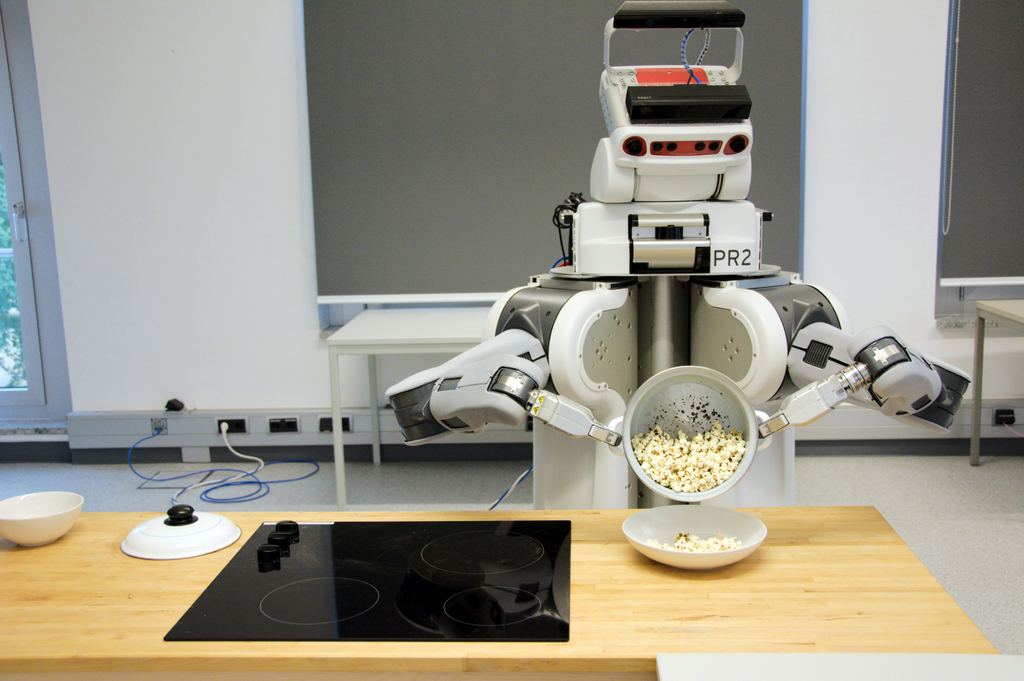Design & Implementation of Cognition-enabled Robot Agents
In this course, David Vernon presents the 10th module of the "Design & Implementation of Cognition-enabled Robot Agents" series. The learning goals of this module enables you to:
Content suitable for students
In this course, David Vernon presents the 10th module of the "Design & Implementation of Cognition-enabled Robot Agents" series. The learning goals of this module enables you to:
This course consists of ten Modules that together provide an overview of the methods required to build a cognition-enabled robot agent. The picture on the right shows an overview of the modules. Each Module consists of several video lectures and an exercise. Some modules contain additional learning materials.

The video is a tutorial showing the basics of the CRAM framework, which is a toolbox for designing, implementing, and deploying software on autonomous robots. The aim of the tutorial is to (1) give an intuition of what knowledge the robot needs to execute even a simple fetch and place, (2) show how many different things can go wrong and teach writing simple failure handling strategies, and (3) make the user familiar with the API of the actions already implemented in the CRAM framework.
Bio:
THE SYNTAX OF ACTION
Path planning is a core problem in robotics. Lydia Kavraki developed a method called the Probabilistic Roadmap Method (PRM), which caused a paradigm shift in the robotics community. The approach introduced randomization schemes that exploited local geometric properties and produced efficient solutions without fully exploring the underlying search space.
There’s a common misconception that decisions made by computers are automatically unbiased – as opposed to those made by humans. However, Chad Jenkins pointed out many ways in which AI can fail to deliver fair and reasonable results. He pointed out what needs to be done in AI to get the intellectual domain right and how the technology and understanding researchers generate can have a positive impact on the world.
Jan Andersen is Head of Research Office at the University of Southern Denmark. He has a background in Computer Science and Danish Language. He has been working with research strategy and research planning. He was involved in building up four very successful research support units. He was an advisor for Rectors of the Danish Technical University, University of Copenhagen, and the former Royal Veterinary and Agricultural University. He was responsible for the cross-faculty follow-up of the Danish university merger in 2007.
The tools available at our disposal for solving some of the really hard problems our society is facing today are old, inadequate, and need to be deprecated. Everyone is looking to Artificial Intelligence based solutions like it’s the next gold rush, without understanding how Machine Learning actually works.
In this talk, I review the Soar cognitive architecture, including the motivation for cognitive architecture, the history of Soar, the applications it has been applied to, and our current research on Interactive Task Learning. I then discuss Soar from the standpoint of an open-source research project: positives, negatives, and challenges.
In his captivating lecture, Frank Guerin examines the question about the integration between robot vision and a deeper understanding of tasks. As robot grasping is still an unsolved problem, he explores why and how human perception of objects is relevant to manipulation and explains what "transferrable toddler skills" are. The lecture is suitable for beginners.